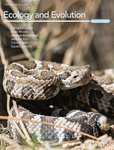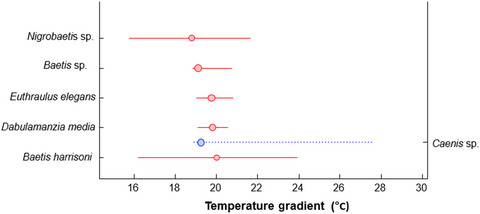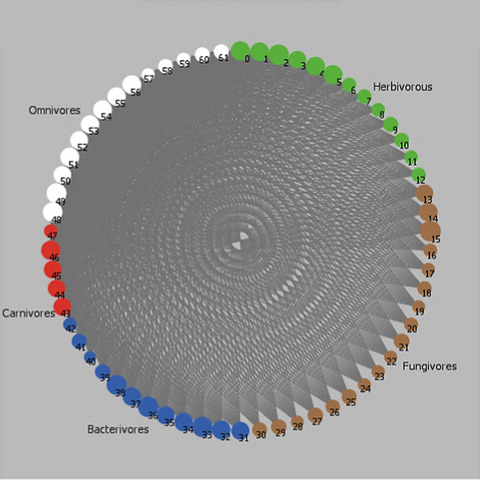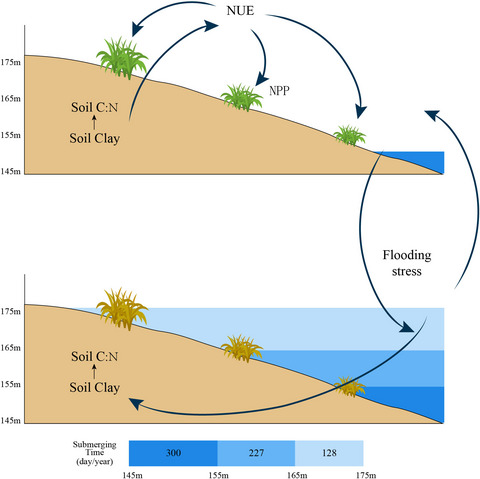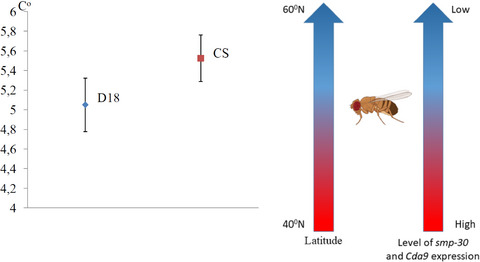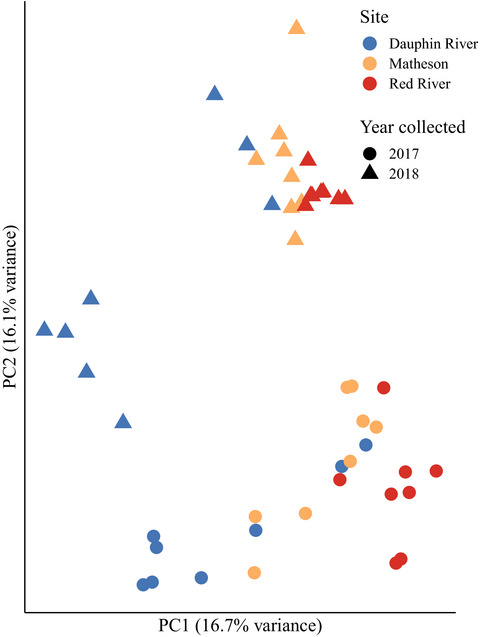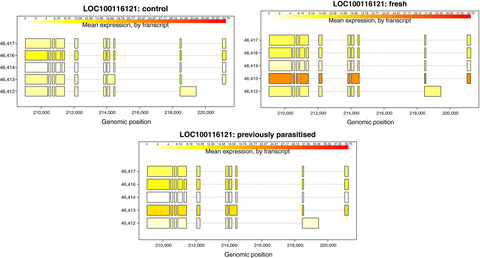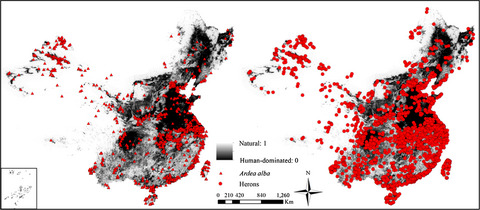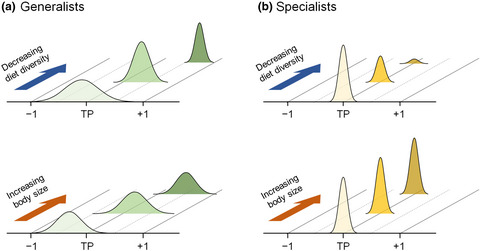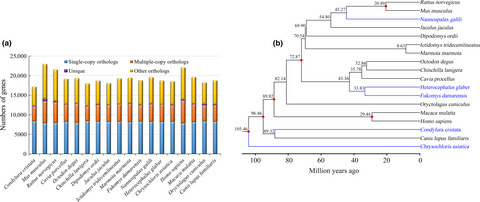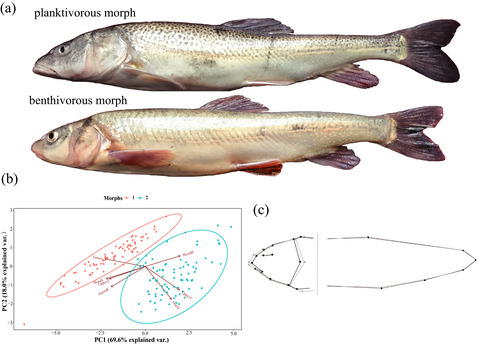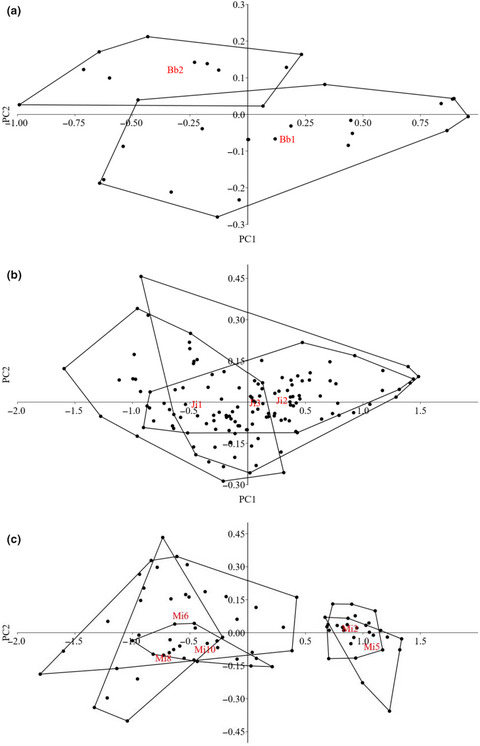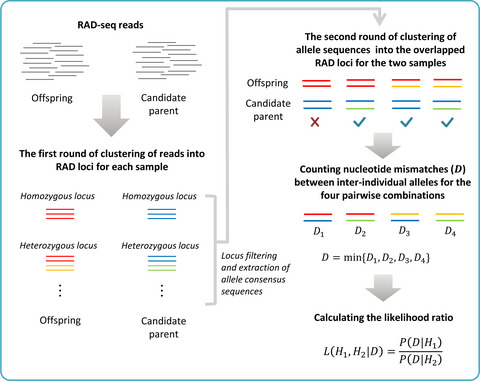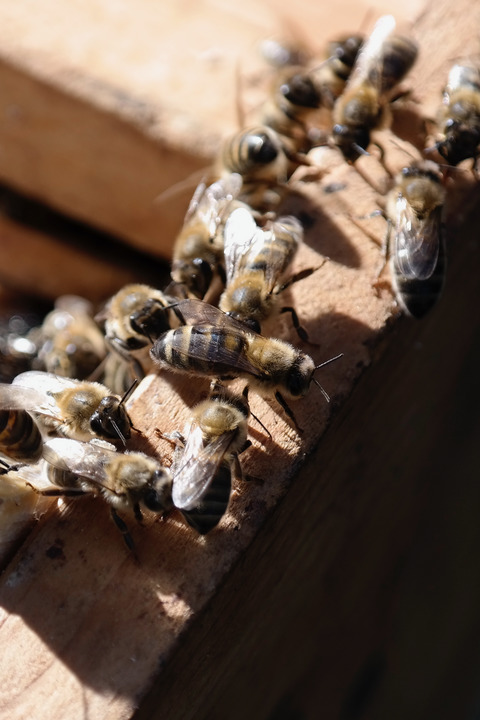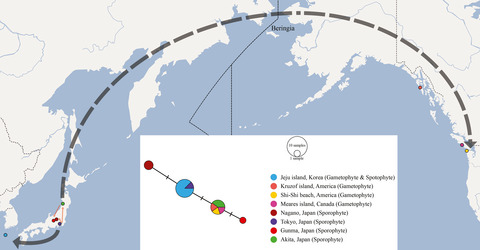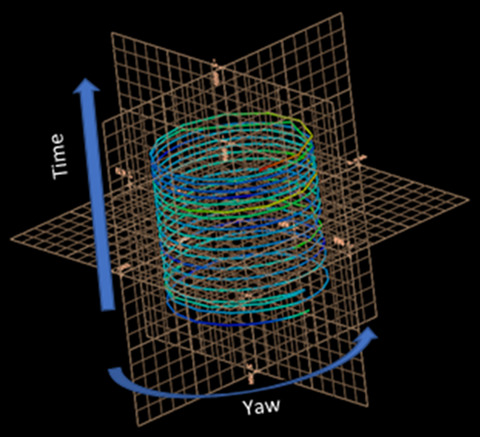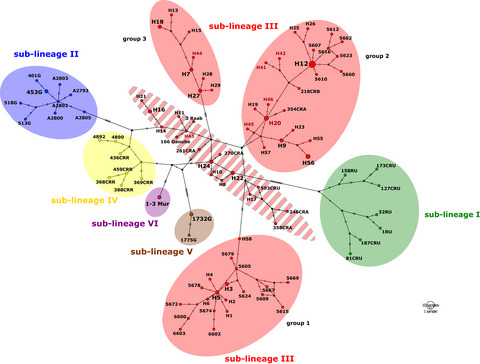Journal list menu
Export Citations
Download PDFs
ISSUE INFORMATION
ACADEMIC PRACTICE IN ECOLOGY AND EVOLUTION
Breaking barriers? Ethnicity and socioeconomic background impact on early career progression in the fields of ecology and evolution
- Pages: 6870-6880
- First Published: 08 June 2020
REVIEWS
Variability in the estimation of ungulate group sizes complicates ecological inference
- Pages: 6881-6889
- First Published: 10 June 2020
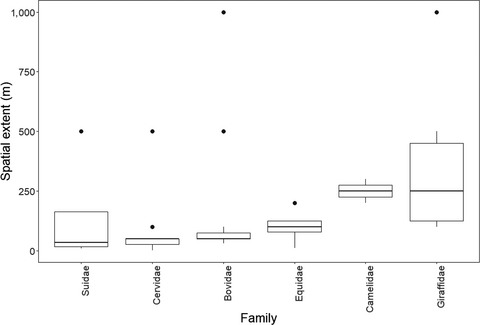
We conducted a literature review to assess prevailing practices used to determine group sizes among ungulates. These practices were highly variable including estimation of aggregations in space and time. This variability and lack of coherence complicates efforts to not only compare and replicate studies but also evaluate underlying theory of group living.
Is population subdivision different from speciation? From phylogeography to species delimitation
- Pages: 6890-6896
- First Published: 28 June 2020
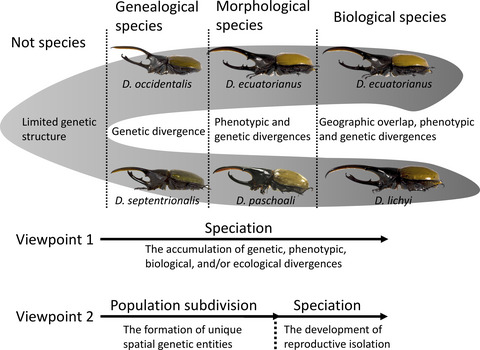
Is population subdivision a speciation process? The answer to the question impacts how we delineate intraspecific and interspecific diversities and may differ across biological systems. Understanding the continuity of divergence processes in different biological systems can be a key to answer the question.
ORIGINAL RESEARCH
Feeding preferences and nutritional niche of wild water buffalo (Bubalus arnee) in Koshi Tappu Wildlife Reserve, Nepal
- Pages: 6897-6905
- First Published: 23 June 2020

We explored for nutritional ecology of an endangered megaherbivore, the wild water buffalo (Bubalus arnee) in Nepal. Signs of wild water buffalo foraging were observed in the field, and samples of forage plants were collected for analysis of nutrient content. We report on the relative frequency of items foraged by wild water buffalo and their nutrient balance to investigate the multidimensional nutritional niche for this species.
Disentangling the spatial and temporal causes of decline in a bird population
- Pages: 6906-6918
- First Published: 30 June 2020

This study disentangles spatial and temporal reasons of the decline of rare European bird population. It shows how demographic drivers as well as environmental factors responsible for a decline can be evidenced using an IPM structured by habitat quality and could be applied in many declining populations.
The role of hydro-environmental factors in Mayfly (Ephemeroptera, Insecta) community structure: Identifying threshold responses
- Pages: 6919-6928
- First Published: 08 July 2020
Olfaction at depth: Cribriform plate size declines with dive depth and duration in aquatic arctoid carnivorans
- Pages: 6929-6953
- First Published: 23 June 2020
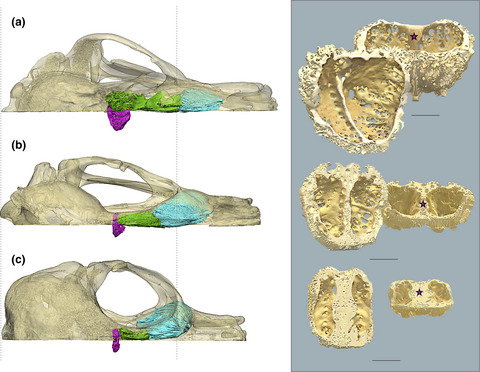
In a comparative study across arctoid carnivorans from terrestrial, aquatic, and semi-aquatic ecologies, we found marked losses in olfactory skull morphology, specifically the cribriform plate, within two lineages that independently reinvaded the marine environment, Pinnipedia, and Mustelidae (sea otter). In a further investigation focusing on aquatic arctoids and the influence of highly variable diving behavioral ecology on olfactory morphology, we found that dive depth and duration are strongly correlated with cribriform plate losses. Findings suggest that reductions in olfactory anatomy in carnivorans is an evolutionary adaptive response to shifting selection pressures associated with reinvasion of marine environments, particularly to foraging “noseblind” and at great depths.
Latitude and protection affect decadal trends in reef trophic structure over a continental scale
- Pages: 6954-6966
- First Published: 29 June 2020
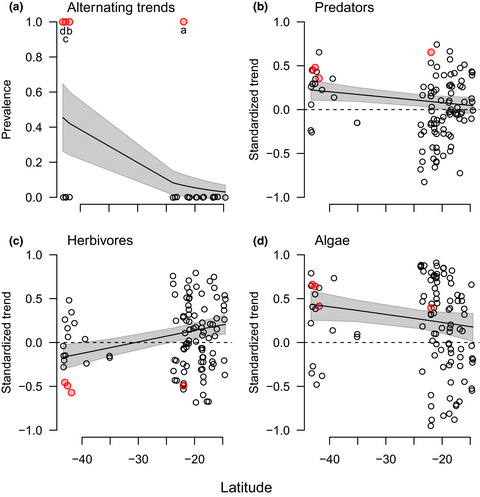
Using time-series data for 104 reef communities spanning tropical to temperate Australia from 1992 to 2013, we quantified relationships among long-term trophic group population density trends, latitude, and exploitation status over a continental-scale biogeographic range. These data suggest that the type and degree of trophic forcing in this system are likely related to one or more covariates of latitude, and that ecosystem resiliency to top-down control does not universally vary in this system based on exploitation level.
Acknowledging uncertainty in evolutionary reconstructions of ecological niches
- Pages: 6967-6977
- First Published: 27 June 2020
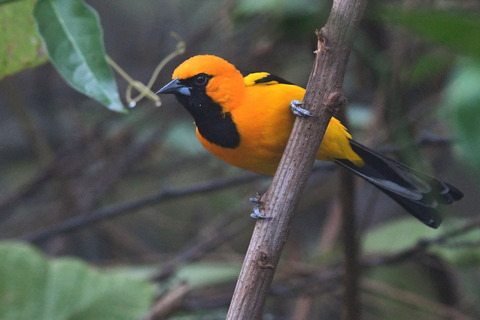
In this manuscript, we demonstrate how the incomplete characterization of species' ecological niches affects ancestral niche reconstruction and evolutionary rate estimation, and offer a solution that incorporates uncertainty into such analyses. We first use a simple simulation to illustrate this problem and its effect on the estimation of ancestral ecological niche and rates of ecological niche evolution. We then suggest a simple, broadly useful innovation for incorporating uncertainty into fundamental niche characterization and subsequent comparative phylogenetic analyses, using an analysis of the New World orioles as a worked example.
Movement patterns of large juvenile loggerhead turtles in the Mediterranean Sea: Ontogenetic space use in a small ocean basin
- Pages: 6978-6992
- First Published: 02 July 2020
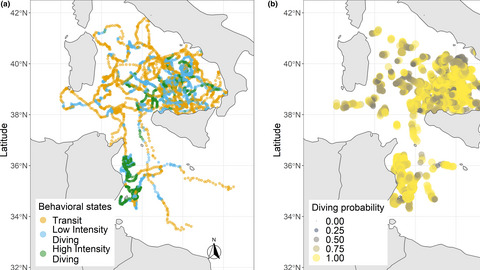
The study reveals the behavior and habitat use of large juvenile and adult-sized loggerhead turtles in a spatially confined oceanic foraging area in the Western Mediterranean Sea. Hidden Markov models were used to quantify different behavioral states along the movement paths of satellite-tracked turtles. Most turtles foraged in deep oceanic waters of the deepest part of the Southern Tyrrhenian Sea with the highest seamounts, while few individuals switched to neritic foraging showing plasticity in foraging strategies among turtles of similar life stages.
Exploring the functional meaning of head shape disparity in aquatic snakes
- Pages: 6993-7005
- First Published: 06 July 2020
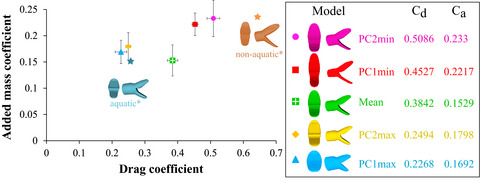
The variability observed in the head of aquatically foraging snakes can partly be explained by diet and size. Part of the diversity can be explain with a partial many-to-one mapping. Some head shapes have a good hydrodynamic profile, while other are less efficient. This could be correlated with a niche specialization toward the aquatic medium.
Lack of conspicuous sex-biased dispersal patterns at different spatial scales in an Asian endemic goose species breeding in unpredictable steppe wetlands
- Pages: 7006-7020
- First Published: 27 June 2020
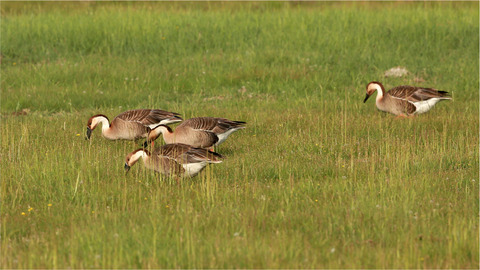
We analyzed the genotypes of 278 Swan Geese samples from 14 locations at 14 microsatellite loci. We found no significant SBD signals at the landscape level, but local dispersal is likely scale-dependent and female-biased within the eastern breeding range. We urge further genetic sampling from other areas in summer to extend our results, complemented by field observations to confirm our DNA analyses conclusions about sex-specific dispersal patterns at different spatial scales in this species.
A regionally scalable habitat typology for assessing benthic habitats and fish communities: Application to New Caledonia reefs and lagoons
- Pages: 7021-7049
- First Published: 08 June 2020
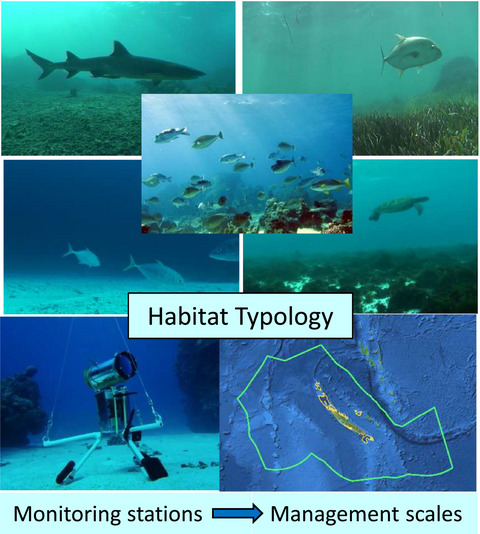
A methodology producing a scalable habitat proxy for ecological assessment and predicting habitat with a high confidence level. Applied to a unique set of in situ video monitoring observations, entailing image-based display of habitats for science uptake. First application of supervised classification rules in ecology.
Occupancy-derived thermal affinities reflect known physiological thermal limits of marine species
- Pages: 7050-7061
- First Published: 15 June 2020
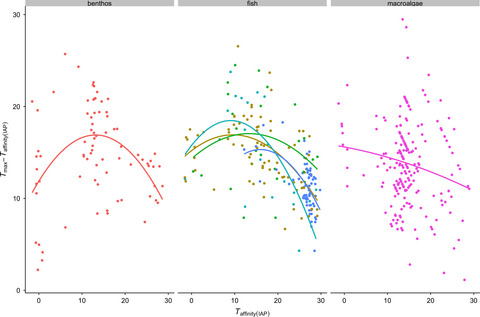
We develop a workflow for matching marine species occurrence records to global sea temperature datasets, to rapidly estimate species-level thermal affinities. We show that thermal affinities estimated in this way are closely correlated with critical thermal limits derived from experiments for 533 marine species from 24 taxonomic classes. Our method allows thermal affinity measures to be rapidly and repeatably estimated for many thousands more marine species, vastly expanding the potential to assess vulnerability of marine communities to warming seas.
Testing for top-down cascading effects in a biomass-driven ecological network of soil invertebrates
- Pages: 7062-7072
- First Published: 18 June 2020
Relative contribution of environmental and nutritional variables to net primary production of Cynodon dactylon (Linn.) Pers in the riparian zone of a Three Gorges tributary
- Pages: 7073-7081
- First Published: 25 May 2020
Transcriptome analysis of Drosophila melanogaster laboratory strains of different geographical origin after long-term laboratory maintenance
- Pages: 7082-7093
- First Published: 08 June 2020
Rethinking trophic niches: Speed and body mass colimit prey space of mammalian predators
- Pages: 7094-7105
- First Published: 28 June 2020

Trophic niches of predators are often characterized along a one-dimensional range in predator–prey body mass ratios setting an "energy limit" and a "subdue limit" toward small and large prey, respectively. To this concept, we add a "speed limit" toward fast prey and show that predators of different hunting strategies separate along these two dimensions to avoid competition.
Lunar synchronization of daily activity patterns in a crepuscular avian insectivore
- Pages: 7106-7116
- First Published: 09 June 2020
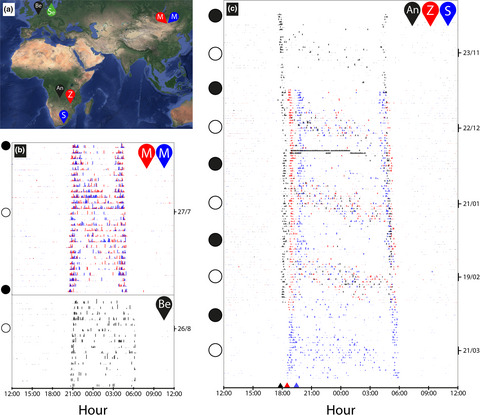
Predictable, recurring environmental changes, such as the daily light-dark cycles, influence both nocturnal and diurnal species and have wide-ranging effects on their behavior. We describe daily activity patterns of European Nightjars from three extremes of the species’ breeding range, during two discrete periods in the annual cycle. Our study highlights the species’ sensitivity to changes in ambient light and its flexibility to respond to such changes in different parts of the world.
Gut microbiomes of sympatric Amazonian wood-eating catfishes (Loricariidae) reflect host identity and little role in wood digestion
- Pages: 7117-7128
- First Published: 25 May 2020
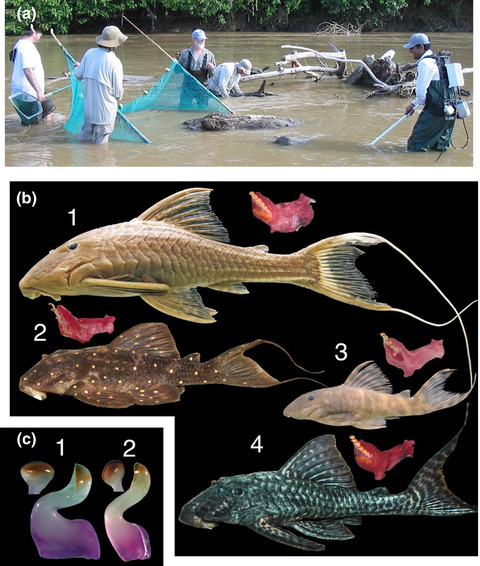
We describe the gut microbiomes of four co-existing freshwater catfish species as well as that of the submerged wood on which they feed. Bacterial communities did not vary by gut region for any catfish species, although they were all different to those identified on submerged wood. Wood digesting pathways were functionally predicted for the wood bacterial microbiome, but were less predicted for the catfish gut microbiome supporting the hypothesis that wood-eating catfishes do not rely on their gut microbiota to digest wood.
Trait-based life strategies, ecological niches, and niche overlap in the nekton of the data-poor Mediterranean Sea
- Pages: 7129-7144
- First Published: 26 May 2020
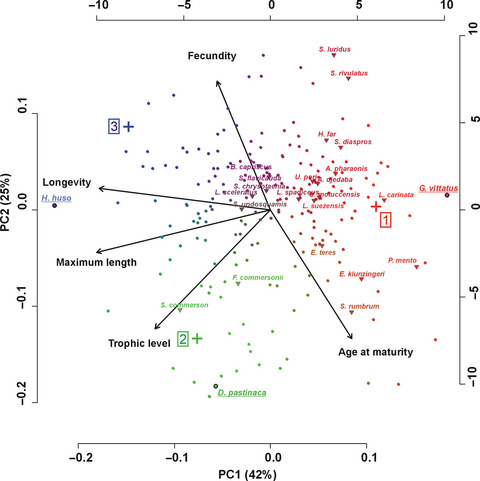
In this study, we used biological traits in order to define the life strategies and niche overlap of 205 nektonic species of the Mediterranean Sea. Focusing on habitats of importance (Posidonia beds, coralligène formations, and lagoons), we investigated strategies and niches of the species present there. Finally, we examined the life strategy of Lessepsian species and investigated the niche overlap between them and indigenous species. We indicated the existence of three life histories (equilibrium, periodic, and opportunistic). Niche overlap was evaluated between all species pairs. This identified species occupying relatively empty ecological niches, like the species Siganus luridus and S. rivulatus. Most Lessepsian species were associated with the opportunistic life strategy, an aspect related to their establishment. Also, we documented that most species occurring in important habitats have a relatively high overlap of niches.
Large-scale patterns of seed removal by small mammals differ between areas of low- versus high-wolf occupancy
- Pages: 7145-7156
- First Published: 01 June 2020

We hypothesize distributions of apex predators can create large-scale variation in the distribution and abundance of mesopredators that consume small mammals, creating predictable areas of high and low granivory. For example, because gray wolf (Canis lupus) territories are characterized by relatively less use by coyotes (C. latrans) and greater use by foxes (Vulpes vulpes, Urocyon cinereoargentus) that consume a greater proportion of small mammals, wolf territories may be areas of reduced small-mammal granivory. Using multi-year, large-scale seed-removal assays and small-mammal surveys across landscapes within and between 11 wolf territories in northern Wisconsin, we demonstrated seed removal of three seed species was lower in high-wolf-occupancy areas across 2 years and small-mammal abundance was lower in high-wolf areas during one of the two study years, suggesting the occurrence of top-down effects of wolves on small-mammal granivory and seed survival.
Genotyping-in-Thousands by sequencing reveals marked population structure in Western Rattlesnakes to inform conservation status
- Pages: 7157-7172
- First Published: 02 June 2020

Genetic studies provide key information for the delineation of conservation units below the species level to help prioritize management efforts. Here, we used Genotyping-in-Thousands by sequencing (GT-seq) to reveal significant population structure and limited connectivity among populations of the at-risk Western Rattlesnake at their northern range periphery in Canada. Our results demonstrate a novel application of GT-seq and suggest that the current conservation unit status for this species in Canada warrants re-examination to better inform proactive management.
Genomic signals found using RNA sequencing show signatures of selection and subtle population differentiation in walleye (Sander vitreus) in a large freshwater ecosystem
- Pages: 7173-7188
- First Published: 13 June 2020
Rapid recovery of tropical forest diversity and structure after shifting cultivation in the Philippines uplands
- Pages: 7189-7211
- First Published: 05 June 2020
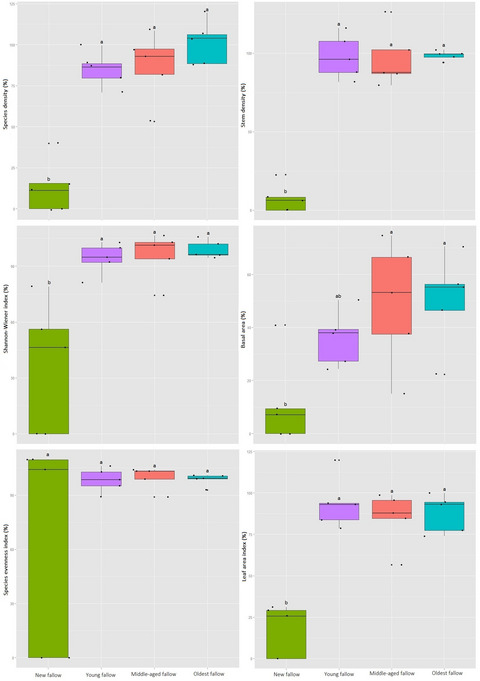
We investigated parameters of forest diversity and structure along a shifting cultivation fallow gradient in Leyte island, the Philippines. Regenerating secondary forests following shifting cultivation abandonment can exhibit high resilience and recover rapidly. Novel and emerging ecosystems like tropical secondary forests are of high conservation importance and can act as a refuge for dwindling tropical forest diversity.
Evidence of capacitation in the parasitoid wasp, Nasonia vitripennis, and its potential role in sex allocation
- Pages: 7212-7220
- First Published: 01 June 2020
Estimating prevalence and test accuracy in disease ecology: How Bayesian latent class analysis can boost or bias imperfect test results
- Pages: 7221-7232
- First Published: 15 June 2020
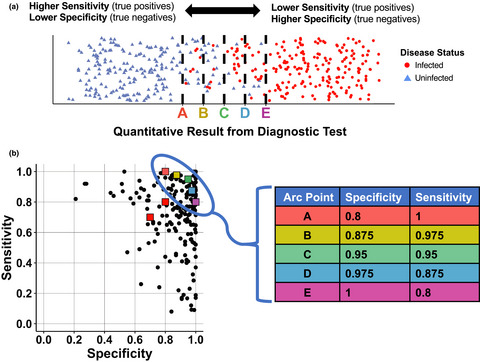
Obtaining accurate estimates of disease prevalence is crucial in disease ecology and wildlife population management, but can be difficult if different diagnostic tests yield conflicting results and if the accuracy of each diagnostic test is unknown. Bayesian latent class analysis (BLCA) provides estimates of prevalence levels and diagnostic test accuracy under the realistic assumption that no diagnostic test is perfect. Using simulations and a wildlife case study, we assess how the precision and accuracy of this method are affected by sample sizes, diagnostic test accuracy, and the choice of diagnostic threshold for quantitative assays, and further explore when the method improves upon the results from a single diagnostic test.
Using citizen science data to inform the relative sensitivity of waterbirds to natural versus human-dominated landscapes in China
- Pages: 7233-7241
- First Published: 09 June 2020
Insect oviposition preference between Epichloë-symbiotic and Epichloë-free grasses does not necessarily reflect larval performance
- Pages: 7242-7249
- First Published: 01 June 2020
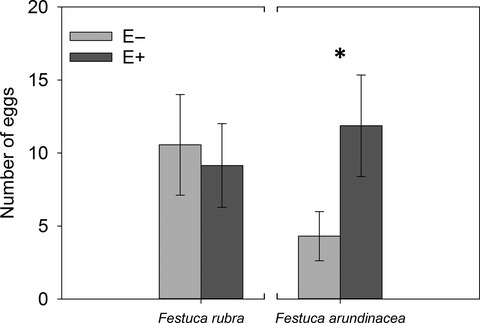
In this study, we addressed the question how insect oviposition preference reflects larval performance in a satyrine butterfly when the host plant harbors a fungal endophyte. Against predictions, we found no clear association between oviposition preference and larval performance. On top of that and against defensive mutualism hypothesis, endophytic plants could attract adult insect females and our results suggest that the responsible cue could be of nonchemical nature.
Trophic response to ecological conditions of habitats: Evidence from trophic variability of freshwater fish
- Pages: 7250-7260
- First Published: 03 July 2020
Shifting spaces: Which disparity or dissimilarity measurement best summarize occupancy in multidimensional spaces?
- Pages: 7261-7275
- First Published: 05 July 2020
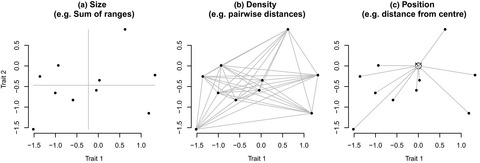
Different measurements of multidimensional space occupancy can give different results and are affected by the multidimensional space properties and biological question. This paper provides a guideline of what different measurements are capturing and in which context they can be useful for answering biological questions.
High predictability of direct competition between marine diatoms under different temperatures and nutrient states
- Pages: 7276-7290
- First Published: 03 June 2020
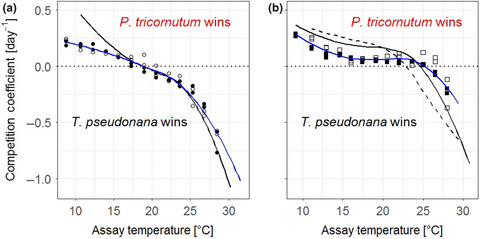
An understanding of the response of mixed populations to abiotic changes is required in order to adequately predict the future composition of phytoplankton communities. This study investigated the growth and competitive ability of two marine diatoms, Phaeodactylum tricornutum and Thalassiosira pseudonana, along a temperature gradient spanning the thermal niches of both species (from 9°C to 35°C) under high-nitrogen and low-nitrogen conditions. Competitive outcomes between the two diatoms were highly predictable based on their monoculture growth performances, indicating that their isolated performance can be used to infer competitive ability and resulting community structure.
Creating outbred and inbred populations in haplodiploids to measure adaptive responses in the laboratory
- Pages: 7291-7305
- First Published: 07 July 2020
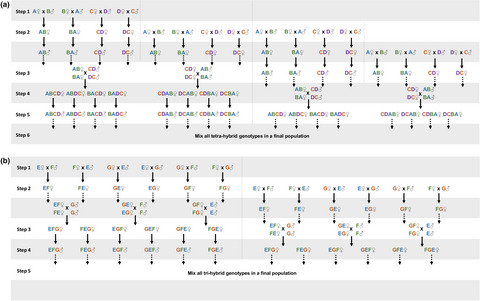
Here, we detail methodologies to create outbred and inbred populations for laboratory studies in haplodiploids. Additionally, we provide an experimental evolution protocol, which allows reducing the risks of losing experimental populations. Finally, we outline the advantages of such methodologies and we emphasize that combining these biological resources with available genetic tools will allow consistent and comparable studies among laboratories using the same organisms.
Occurrence of apomictic conspecifics and ecological preferences rather than colonization history govern the geographic distribution of sexual Potentilla puberula
- Pages: 7306-7319
- First Published: 22 June 2020

Geographic distributions of taxa are the result of several interrelated factors. In our study, we quantified and separated the role of three main drivers (ecological preferences, colonization history, and competitive and reproductive interactions with conspecifics) on the distribution of sexual Pontentilla puberula (Rosaceae) in the Eastern European Alps. The occurrence of apomictic individuals was the main factor affecting sexuals' distribution, followed by ecological preferences and their joint effects. Our results highlight the interplay of competitive exclusion by conspecifics and ecological differentiation in determining mosaic-like geographic distributional patterns.
Population status and ecology of the Salmo trutta complex in an Italian river basin under multiple anthropogenic pressures
- Pages: 7320-7333
- First Published: 09 June 2020

The survival of the native Mediterranean trout Salmo cettii is threatened by various anthropogenic stressors, including the genetic introgression with the alien Salmo trutta and the effects of climate change. The aims of the study were to quantify changes in the climate and to analyze distribution, status and ecology of S. trutta complex populations in the upper Tiber River basin (central Italy). The absence of significant range shifts for trout populations indicates a marked resilience of trout populations probably due to buffering effects of intrinsic population dynamics. However, strong variations in hydraulic regime and water temperature could overcome these compensatory effects and may lead to a severe decline in trout populations in the near future.
Odorant receptor phylogeny confirms conserved channels for sex pheromone and host plant signals in tortricid moths
- Pages: 7334-7348
- First Published: 30 June 2020
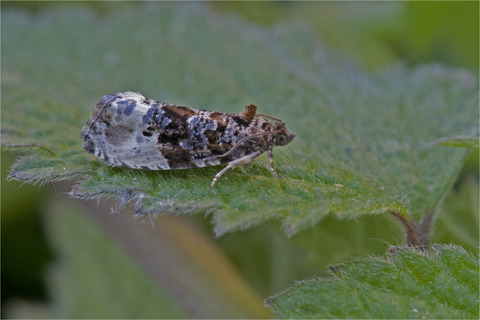
Hedya nubiferana (a tortricid moth on apple and other rosacean plants) is attracted to the sex pheromone and to the plant-derived kairomone of codling moth (another tortricid moth feeding on apple). A conserved odorant receptor is the basis for this coincidence, which demonstrates the interaction of social signals and food cues in insect herbivores.
Land masses and oceanic currents drive population structure of Heritiera littoralis, a widespread mangrove in the Indo-West Pacific
- Pages: 7349-7363
- First Published: 03 June 2020
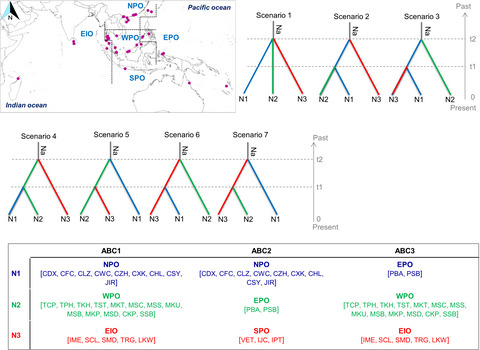
This is the first report of the geographic distribution of genetic variation of a widespread mangrove (Heritiera littoralis) in the Indo-West Pacific region. Being conducted at a large spatial scale, our study identified that natural geographic barriers, contemporary oceanic currents, and species ecology act interactively to shape present-day distribution of the species in this region.
Experimental assessment of biotic and abiotic filters driving community composition
- Pages: 7364-7376
- First Published: 13 June 2020
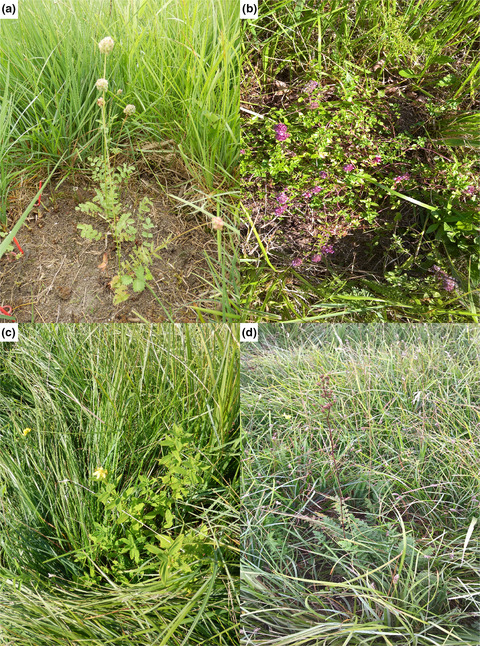
We demonstrated in a six-year experiment that a main driver of species community composition is a biotic filter because many species with habitat preferences different from focal localities (i.e. with low Beals index) were able to successfully establish from seeds and grow in the focal habitat if competition was removed. Some of these species that became established in gaps were able to exclude or at least postpone their competitive exclusion. Although Beals index is a good predictor of species survival in plant communities, we should be careful to use it as species pool determinant, especially in disentangling the effect of abiotic and biotic filter on species community composition because it can exclude many species able to grow in given abiotic environment from species pool.
Genome-wide adaptive evolution to underground stresses in subterranean mammals: Hypoxia adaption, immunity promotion, and sensory specialization
- Pages: 7377-7388
- First Published: 03 June 2020
Genetic evidence for sexual reproduction and multiple infections of Norway spruce cones by the rust fungus Thekopsora areolata
- Pages: 7389-7403
- First Published: 17 June 2020

The biology and epidemiology of obligate parasites and in particular rust fungi are poorly understood since they are notorious difficult to study. The life cycle of rust fungi includes host alteration and up to five spore types with haploid, diploid, and dikaryotic nuclear stages which complicates the analyses of them. In this manuscript we show several feature and particularities of the rust fungi Thekopsora areolata which recently become a serious threat to seed production in Norway spruce (Picea abies). In our study, we used newly develop microsatellite markers to analyze the population structure and epidemiology; the study answers important questions of T. areolata biology, its reproduction, infection biology, and mode of spread in host tissue.
Zonation of mangrove flora and fauna in a subtropical estuarine wetland based on surface elevation
- Pages: 7404-7418
- First Published: 04 June 2020
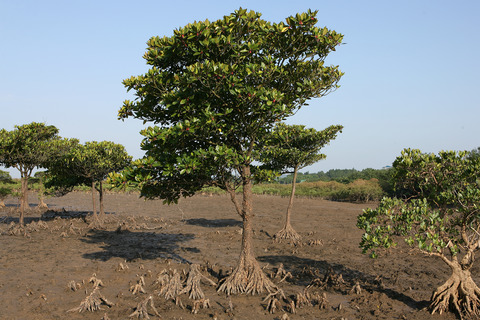
The spatial distributions of mangrove plants and molluscs showed obvious patterns of zonation correlating with surface elevation. Mangrove flora and fauna within each habitat niche occupied distinct vertical ranges along the elevation gradient, irrespective of season. This is the first quantitative study to explicitly examine the influences of surface elevation on the spatial distributions of mangrove fauna within the intertidal zone.
Intraspecific genetic variation of a Fagus sylvatica population in a temperate forest derived from airborne imaging spectroscopy time series
- Pages: 7419-7430
- First Published: 19 June 2020
Pelagic–benthic resource polymorphism in Schizopygopsis thermalis Herzenstein 1891 (Pisces, Cyprinidae) in a headwater lake in the Salween River system on the Tibetan Plateau
- Pages: 7431-7444
- First Published: 08 July 2020
Rapid generation of ecologically relevant behavioral novelty in experimental cichlid hybrids
- Pages: 7445-7462
- First Published: 16 June 2020
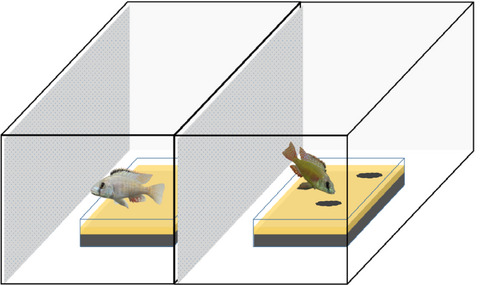
Interspecific hybrids can have transgressive phenotypes that may allow them to explore novel ecological niches. Using a combination of behavioral assays, morphometric analyses, and genetic mapping, we demonstrate transgressive segregation in morphology and in a novel trophic behavior in F2 hybrids between two generalist cichlid species from Lake Malawi. Such rapid generation of novel ecologically relevant phenotypes might contribute to the rapid generation of ecological diversity in cichlid fish adaptive radiations.
Allelopathy and its coevolutionary implications between native and non-native neighbors of invasive Cynara cardunculus L.
- Pages: 7463-7475
- First Published: 28 June 2020
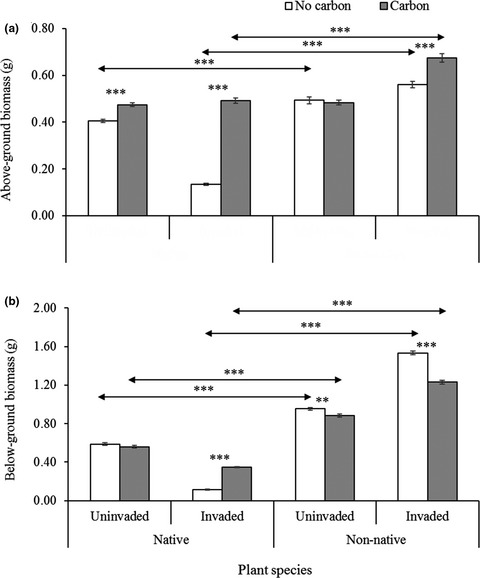
Significant allelopathic effects of rhizosphere soil in Cynara cardunculus have been observed in terms of germination and growth reduction of associated native, but less effect on non-native grass species. The results indicate the co-evolved tolerance of native and non-native in the introduced range, where native species showed severe sensitivity, but non-native was more resistance.
Ambiguous species boundaries: Hybridization and morphological variation in two closely related Rubus species along altitudinal gradients
- Pages: 7476-7486
- First Published: 15 June 2020
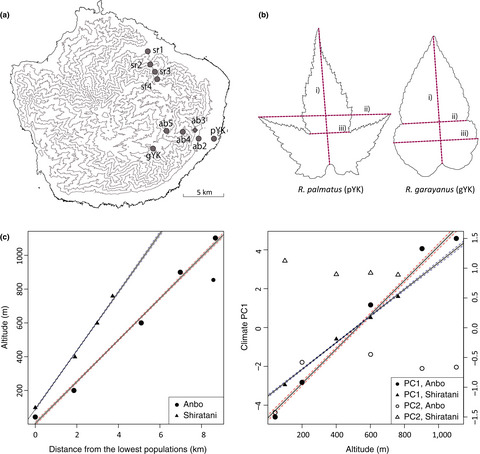
We compared clines of leaf morphology and molecular hybrid index at species boundaries of two closely related but ecologically distinct species. The leaf trait clines were steeper than molecular hybrid index clines. Species boundaries might be less obvious than one would conclude from the morphological traits.
Census data aggregation decisions can affect population-level inference in heterogeneous populations
- Pages: 7487-7496
- First Published: 25 June 2020
The protected flora of long-established cemeteries in Hungary: Using historical maps in biodiversity conservation
- Pages: 7497-7508
- First Published: 30 June 2020
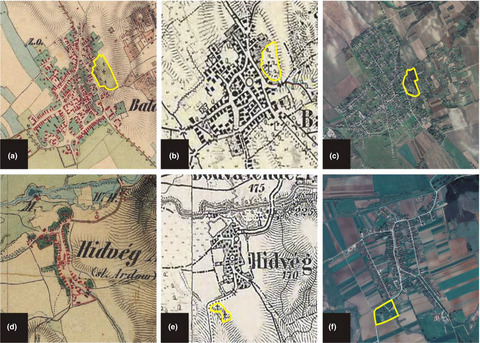
The main aim of this paper was predicting the conservation potential of long-established and newly established cemeteries of Hungarian settlements based on the digitized maps of the 2nd Military Survey of the Austrian Empire (1819–1869), by categorizing cemeteries into 3 distinct (anthropogenic habitat, cemetery, or natural habitat) types. We used records of the protected plant flora from 991 Hungarian cemeteries. 55.80% of surveyed cemeteries harboured protected vascular plants (totally 92 species). Long-established and larger cemeteries harbour more protected plant species. Human population size of the settlements correlated negatively with the number of protected species and individuals in their cemeteries. Moreover, woodland cover, proportion of grassland, and geographic altitude also significantly affected the number of protected plant species in cemeteries.
Advancing biodiversity assessments with environmental DNA: Long-read technologies help reveal the drivers of Amazonian fungal diversity
- Pages: 7509-7524
- First Published: 23 June 2020
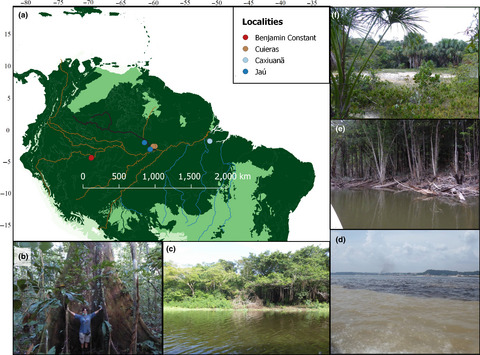
Here we compare the novel long-read data for metabarcoding with already published short reads to assess Amazonian fungal diversity and community turnover. Habitat type emerges as the strongest factor in explaining fungal community composition. Soil properties have different effects depending on the soil layer (litter or mineral soil) and the choice of genetic marker. Naturally, open areas—campinas—are the richest habitat overall, highlighting the importance of this habitat in microbial diversity.
Odonate species occupancy frequency distribution and abundance–occupancy relationship patterns in temporal and permanent water bodies in a subtropical area
- Pages: 7525-7536
- First Published: July 2020
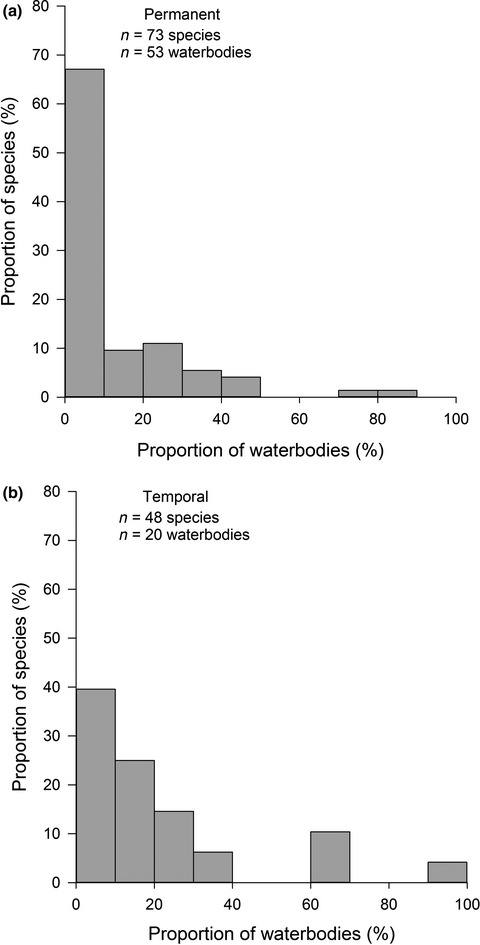
In this paper, we explore species richness, species occupancy frequency distributions (SOFD), and abundance–occupancy relationship (SAOR) patterns of dragonflies (Odonata) in a neotropical subtropical grassland area, especially addressing differences between permanent and temporal water bodies. We were able to show that both types of water bodies had odonate assemblages which fitted best with the unimodal satellite SOFD pattern while the SAOR pattern was positive and did not differ between permanent and temporal water bodies. Our results are consistent with a niche-based model rather than a metapopulation dynamic model. This is to our knowledge, the first time SOFD and SAOR patterns are tested for aquatic invertebrates in a subtropical area.
Generation and application of river network analogues for use in ecology and evolution
- Pages: 7537-7550
- First Published: 30 June 2020

Recently, research on spatial dynamics in ecology and evolution has bloomed. However, spatial structures used in theoretical and empirical ecological studies are often not representative of realistic landscapes. This is particularly true for river networks, which are of paramount interest to ecologists owing to their wide (but currently severely declining) biodiversity. Indeed, most of ecological work has been neglecting the scaling character of real river networks, despite well-established knowledge in the fields of geomorphology and hydrology. Here, we present a method to create optimal channel networks (OCNs, i.e., river network analogues reproducing all topographic and scaling features of natural rivers), and the respective R-package allowing their generation and analysis. We review the theoretical background underlying the OCN concept, present the main package functionalities, discuss possible applications in the realm of ecology and evolution, and detail how the package can be integrated with other popular R-packages in spatial ecology.
Species–area relationships in the Andaman and Nicobar Islands emerge because rarer species are disproportionately favored on larger islands
- Pages: 7551-7559
- First Published: July 2020
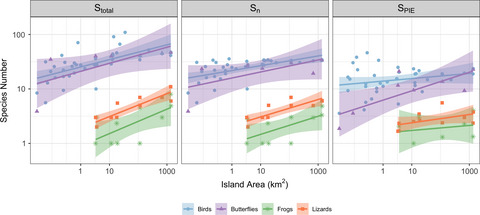
Here, we show that the island species–area relationships (ISARs) of birds, butterflies, amphibians, and reptiles in the Andaman and Nicobar islands are a result of processes beyond random sampling, where species are disproportionately favored on larger islands. Using an abundance-weighted diversity measure, we show that this disproportionate effect is primarily due to changes in the abundance of rare species. Overall, our results emphasize the importance of larger islands as sources of rare species.
Marine water environmental DNA metabarcoding provides a comprehensive fish diversity assessment and reveals spatial patterns in a large oceanic area
- Pages: 7560-7584
- First Published: 23 June 2020
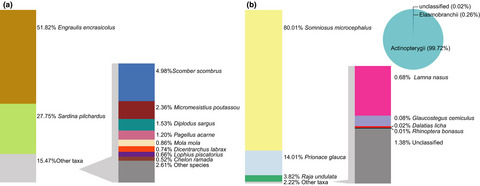
eDNA samples provide information on fish diversity in a broad-scale marine area, detecting almost ten times more fish species compared with pelagic trawling, including some considered elusive or difficult to capture with traditional fishing methods. The potential of eDNA is particularly relevant in a context of global change, where establishing efficient management actions based on numerous, continuous, and accurate biodiversity assessments is paramount.
Evaluating the effect of reference genome divergence on the analysis of empirical RADseq datasets
- Pages: 7585-7601
- First Published: 28 June 2020
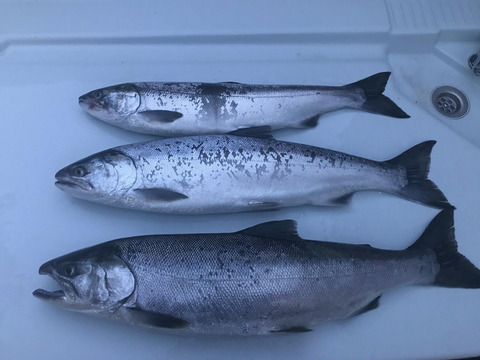
A common practice in biodiversity genomics is to align high-throughput sequencing reads generated for one species to the reference genome of a related species. In this study I aligned reads from empirical RADseq datasets generated for two species of salmonids to published reference genomes for six salmonid species of varying phylogenetic distance. Increasing phylogenetic distance between target species and reference genome reduced mapping success and quality, altered variant detection, and impacted inferences of population structure. These findings reveal that choice of reference genome is an important variable that affects the output of bioinformatic pipelines.
Plastome phylogenomics and phylogenetic diversity of endangered and threatened grassland species (Poaceae) in a North American tallgrass prairie
- Pages: 7602-7615
- First Published: 25 June 2020
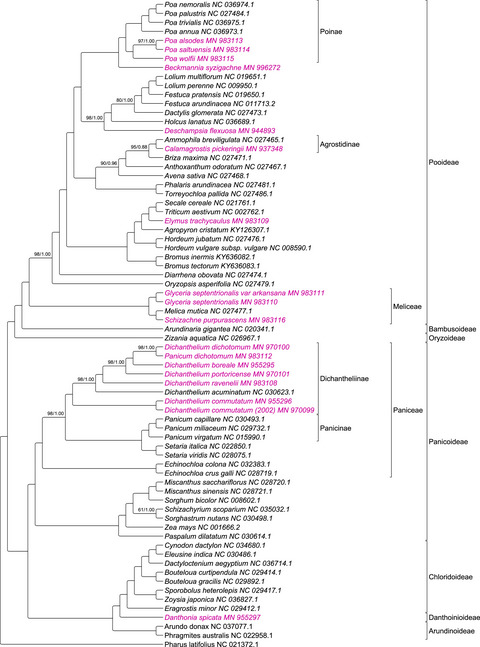
In this study, we examined the ecological and evolutionary roles of endangered and threatened grasses by establishing robust evolutionary relationships with other nonthreatened native and introduced grass species of the community. We present a modified technique to extract DNA from herbarium specimens and use phylogenetic analysis to reveal phylogenetic clustering of the endangered and threatened species.
Phenotypic responses to temperature in the ciliate Tetrahymena thermophila
- Pages: 7616-7626
- First Published: July 2020
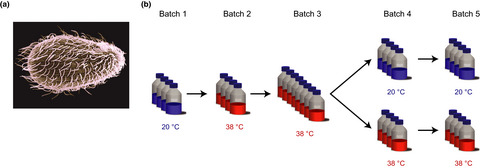
Using experimental evolution, we evolved a model ciliate in a novel high-temperature environment for more than 35 generations. We observed long lag phases, a strong reduction in cell size, and modifications in cell shape. Adapted populations exposed to their original temperature displayed plastic responses in many traits, indicating phenotypic plasticity is an important component of this species thermal stress response.
Diet of a rare herbivore based on DNA metabarcoding of feces: Selection, seasonality, and survival
- Pages: 7627-7643
- First Published: 30 June 2020

Diet and foraging behavior are the foundation of an herbivore's life history strategy and it is imperative that we know the species of plants they prefer. We used DNA metabarcoding techniques to noninvasively sample the threatened northern Idaho ground squirrel (Urocitellus brunneus) diet. We used three gene regions and found that diets differed on the genus level between season, availability, and survival was associated with particular plants.
Responses of four submerged macrophytes to freshwater snail density (Radix swinhoei) under clear-water conditions: A mesocosm study
- Pages: 7644-7653
- First Published: 23 June 2020
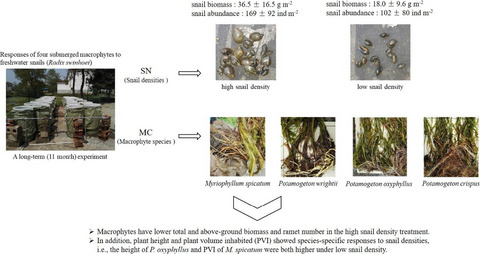
In the study, we conducted a long-term (11-month) experiment to explore the effects of snail density on macrophytes with distinct structures in an outdoor clear-water mesocosm based on different snail density and macrophyte species treatments. Our results indicated that high snail density reduced total biomass of submerged macrophytes and ramet number. In addition, plant height and plant volume inhabited showed species-specific responses to snail densities.
Unraveling the mystery of the glacier bear: Genetic population structure of black bears (Ursus americanus) within the range of a rare pelage type
- Pages: 7654-7668
- First Published: 27 June 2020

We examine contemporary genetic population structure of black bears within the geographic extent of a rare color morph known as glacier bears. We explore how this structure relates to pelage color and landscape features of a recently glaciated and highly fragmented landscape of Southeast Alaska and western Canada. This research is the first to be done on the biogeography of this rare color morph of black bear. Our hope is that this manuscript will be the first step to understand and conserve glacier bears as well as an important step towards protecting the biodiversity of black bears in this region and the world.
Seasonal polyphenism of spotted-wing Drosophila is affected by variation in local abiotic conditions within its invaded range, likely influencing survival and regional population dynamics
- Pages: 7669-7685
- First Published: 24 June 2020
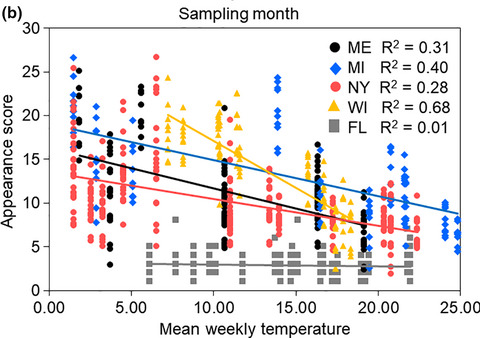
We explored how seasonal traits are correlated with functional outcomes in cold tolerance in D. suzukii, and whether there are regional differences in trait expression. While wing length and abdominal melanization were the best predictors of the larval abiotic environment, the duration and timing of cold exposure also produced significant physiological variation. Because we observed morphotype variation among wild D. suzukii populations, in different regions of the Eastern United States, a population-centered research and modeling approach may be required to assign morphotype labels and predict overwintering survival outcomes.
Meta-replication, sampling bias, and multi-scale model selection: A case study on snow leopard (Panthera uncia) in western China
- Pages: 7686-7712
- First Published: 06 July 2020

Meta-replication in distribution modeling represents a powerful approach to identify either the locally specific or broad ecological responses of a focal species. We compared two landscapes of western China, which differ in limiting factors, testing the multi-scale response of snow leopard (Panthera uncia) to several environmental predictors. We suggest a new method for model selection, and explore the effect of two correction types on datasets showing different bias intensities.
Compared with conventional PCR assay, qPCR assay greatly improves the detection efficiency of predation
- Pages: 7713-7722
- First Published: 27 June 2020
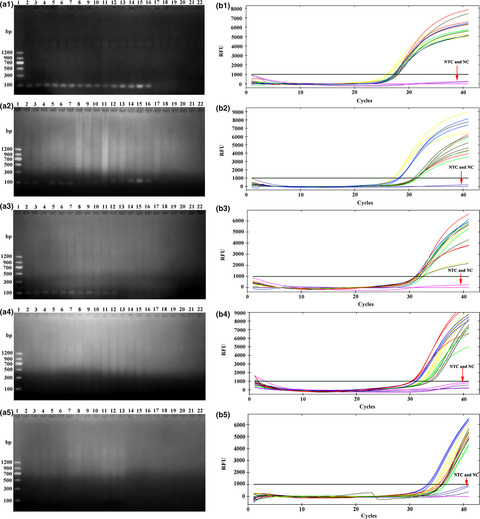
Studies of predation can contribute greatly to understanding predator–prey relationships and can also provide integral knowledge concerning food webs and multi-trophic level interactions. It is particularly important to choose applicable methods to identify predator–prey interactions. This manuscript offers a comparison of cPCR and qPCR assays in molecular gut content analysis.
Do Chinese cavefish show intraspecific variability in morphological traits?
- Pages: 7723-7730
- First Published: 06 July 2020
Optimizing the widely used nuclear protein-coding gene primers in beetle phylogenies and their application in the genus Sasajiscymnus Vandenberg (Coleoptera: Coccinellidae)
- Pages: 7731-7738
- First Published: 28 June 2020
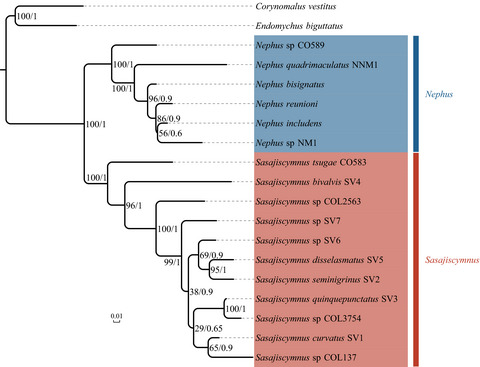
We optimized five NPC fragments widely used in beetle phylogenetics by reducing the degenerate site of primers and the length of target genes slightly. These five NPC fragments and 6 other molecular loci were amplified to test the monophyly of the coccinellid genus Sasajiscymnus. The analysis of our molecular data set clearly supported the genus Sasajiscymnus may be monophyletic but confirmation with an extended sampling is required. A fossil-calibrated chronogram was generated by BEAST, indicating an origin of the genus at the end of the Cretaceous (77.87 Myr). Furthermore, a phylogenetic informativeness profile was generated to compare the phylogenetic properties of each gene more explicitly. The results showed that COI provides the strongest phylogenetic signal among all the genes, but Pepck, Topoisomerase, CADXM, and CADMC are also relatively informative
Implications of acute temperature and salinity tolerance thresholds for the persistence of intertidal invertebrate populations experiencing climate change
- Pages: 7739-7754
- First Published: 25 June 2020
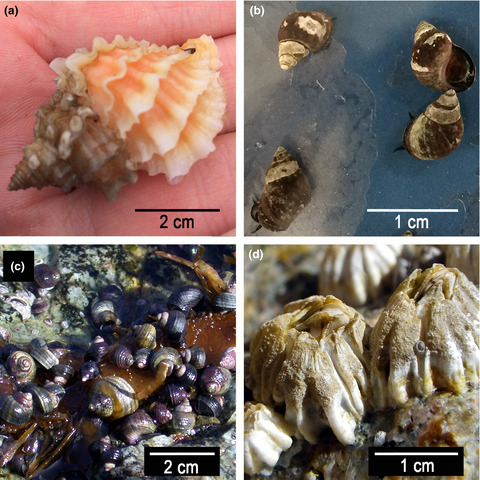
To determine how past climate conditions have shaped present-day tolerance thresholds of marine animals, we examined 4 species of intertidal invertebrates inhabiting coasts of Vancouver Island, Canada, which have experienced historically distinct climate conditions. There was limited evidence of divergence among populations in tolerance of acute stress despite the substantial historical differences in extreme temperature and salinity conditions between coasts. However, we predict present-day tolerance thresholds would be sufficient to allow adults of these populations to tolerate extreme temperatures predicted for the next several hundred years.
Elevation and landscape change drive the distribution of a montane, endemic grassland bird
- Pages: 7755-7767
- First Published: 06 July 2020
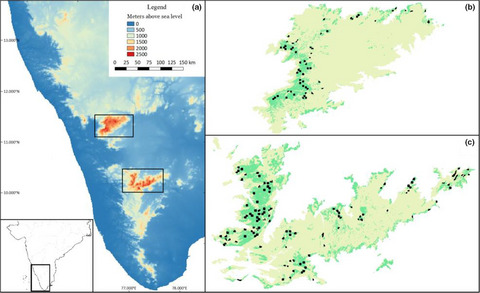
The montane grassland ecosystem of the Indian Western Ghats is experiencing severe anthropogenic threats. We examined factors influencing the occupancy and abundance of the Nilgiri pipit, endemic to these grasslands. We found that the presence and abundance of the species are strongly shaped by elevation, making it vulnerable to climate change, and is also shaped by landscape change, including invasive woody invasion, which has driven substantial local extinction.
Characterizing niche differentiation among marine consumers with amino acid δ13C fingerprinting
- Pages: 7768-7782
- First Published: 30 June 2020
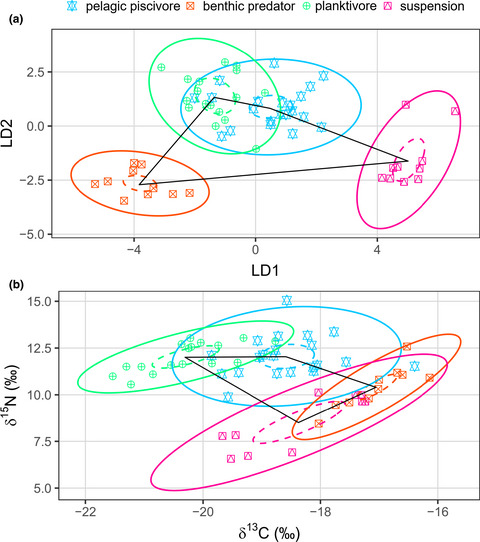
Our study uses stable isotope fingerprinting of amino acid to characterize resource utilization and niche segregation among consumers in the Baltic Sea. We demonstrate that the isotope fingerprinting method (a) can resolve dietary niches at a much higher resolution than bulk stable isotope analysis (b). This methodological advance can improve our understanding of how management practices affect marine ecosystem functioning.
Genotyping-free parentage assignment using RAD-seq reads
- Pages: 7783-7791
- First Published: 30 June 2020
Genetic differentiation between two varieties of Oreocharis benthamii (Gesneriaceae) in sympatric and allopatric regions
- Pages: 7792-7805
- First Published: 28 June 2020
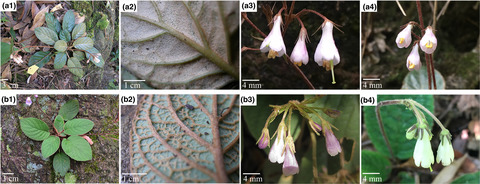
Introgression between closely related species occurs commonly where their distributions overlap, leading to their becoming more morphologically and genetically similar. However, few of these studies have looked at intraspecific cases, especially in plants. Here, we report a reverse situation that the genetic variance between two varieties of Oreocharis benthamii in sympatric populations is significantly more than that in allopatric populations.
Selection for outbreeding in Varroa parasitising resistant honey bee (Apis mellifera) colonies
- Pages: 7806-7811
- First Published: July 2020
Macroinvertebrate communities in streams with contrasting water sources in the Japanese Alps
- Pages: 7812-7825
- First Published: 28 June 2020
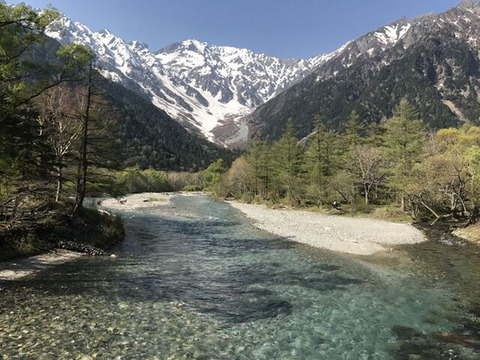
Macroinvertebrate communities in groundwater and snowmelt fed streams were investigated across the northern Japanese Alps. Unique community structures, and trait characteristics, were influenced by the environmental conditions in the two stream types. Macroinvertebrates inhabiting snowmelt fed streams may be at a greater risk from future climatic change in the region.
Study of the independent gametophytes found on Jeju Island in South Korea and the first record of the obligate independent gametophyte of Antrophyum obovatum Baker
- Pages: 7826-7838
- First Published: 07 July 2020
Effects of embryo energy, egg size, and larval food supply on the development of asteroid echinoderms
- Pages: 7839-7850
- First Published: 08 July 2020
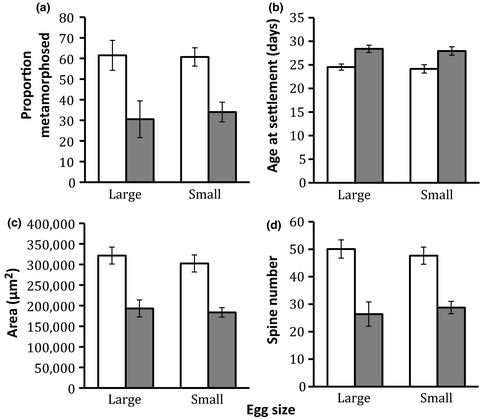
In two species of sea stars, exogenous food levels are more important than maternal investment in determining larval and juvenile quality. The relative importance of maternal investment to fundamental life history parameters (time to and size at metamorphosis) does not appear to be consistent within echinoderms.
A new digital method of data collection for spatial point pattern analysis in grassland communities
- Pages: 7851-7860
- First Published: 28 June 2020
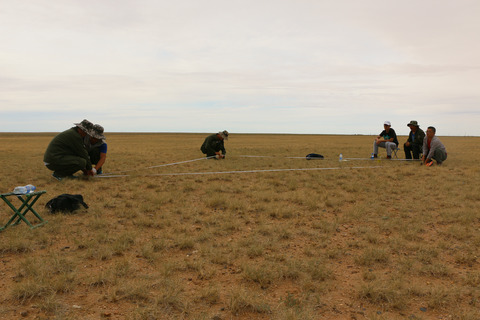
A major objective of plant ecology research is to determine the underlying processes responsible for the observed spatial distribution patterns of plant species. Plants can be approximated as points in space for this purpose, and thus, spatial point pattern analysis has become increasingly popular in ecological research. We successfully executed a new sampling method, using digital photography and a geographical information system, to collect experimental data on the spatial point patterns for the populations in this grassland community.
Age-related variation in the trophic characteristics of a marsupial carnivore, the Tasmanian devil Sarcophilus harrisii
- Pages: 7861-7871
- First Published: 07 July 2020
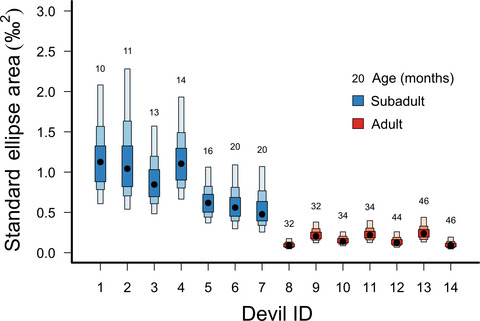
By using stable isotope analysis of whiskers, we quantify variation in the isotopic trophic niches of Tasmanian devils as they age. We highlight changes in the isotopic composition and variation of devil whiskers with increasing age, reflecting the effect of weaning in early life, and a likely shift from a diverse subadult diet of small mammals, birds and invertebrates through to larger herbivores in adulthood.
A new direction for differentiating animal activity based on measuring angular velocity about the yaw axis
- Pages: 7872-7886
- First Published: 06 July 2020
Assessing biotic and abiotic effects on forest productivity in three temperate forests
- Pages: 7887-7900
- First Published: 30 June 2020
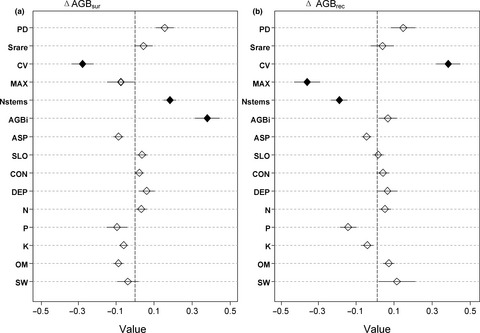
Density variables were the most critical drivers of the AGB increments of the surviving trees. Structural diversity enhanced the AGB increments of the recruits, but diminished the annual AGB increments of the surviving trees. Species diversity and abiotic variables did not have impacts on the productivity in the examined forest plots.
Growth and survival of the superorganism: Ant colony macronutrient intake and investment
- Pages: 7901-7915
- First Published: 07 July 2020
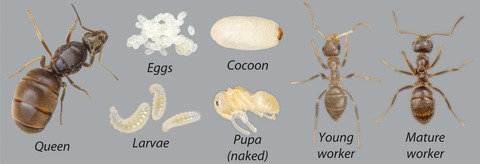
Nutrients can limit how organisms allocate to different necessary life processes (life-history allocations). We show that ant colonies and the individual ants making up the colonies show similar trade-offs with regard to the amount of protein and carbohydrate that is available to them, and that both individuals and colonies have the same optimal ratios of these necessary macronutrients.
Climate anomalies affect annual survival rates of swifts wintering in sub-Saharan Africa
- Pages: 7916-7928
- First Published: 06 July 2020
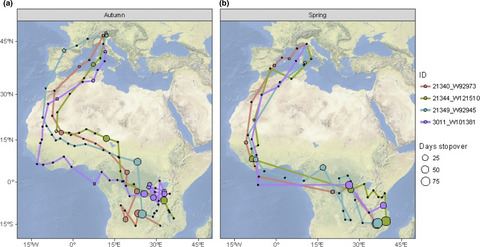
We examined survival and recapture probabilities of two species of swifts by capture–mark–recapture data collected in northern Italy in the breeding season, and we used geolocators to establish the exact wintering areas of birds breeding in our study colonies. Survival rates were relatively high (>71%) and showed marked annual variations related to different climatic indices. In the Pallid Swift, the Sahel rainfall index best explained survival, with driest seasons associated with reduced survival, while in the Common Swift the El Niño–Southern Oscillation (ENSO) cycle was associated with survival.
In the foothill zone—Sabanejewia balcanica (Karaman 1922), in the lowland zone—Sabanejewia bulgarica (Drensky, 1928): Myth or reality?
- Pages: 7929-7947
- First Published: 03 July 2020




